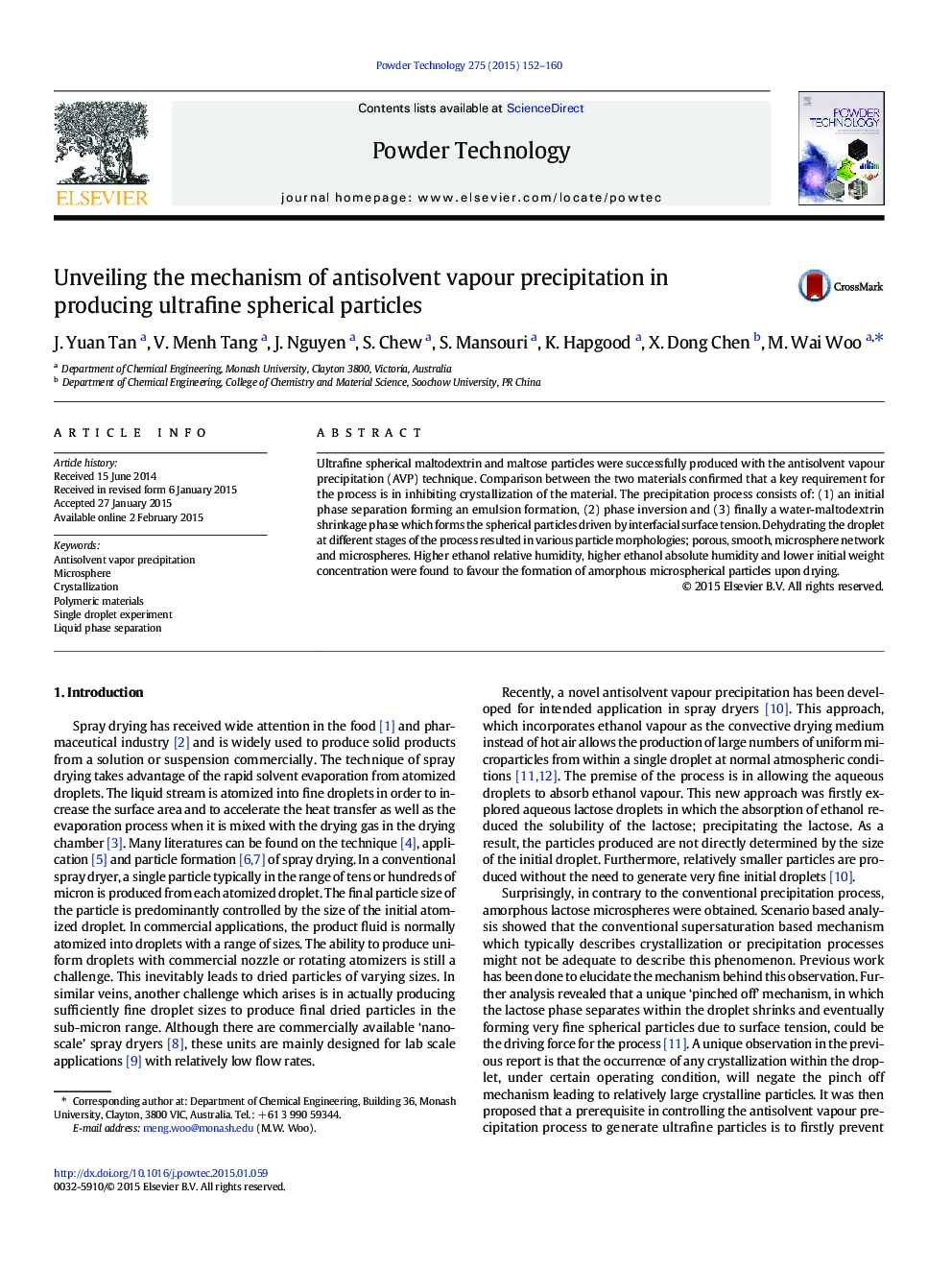| Article ID | Journal | Published Year | Pages | File Type |
|---|---|---|---|---|
| 235669 | Powder Technology | 2015 | 9 Pages |
•Antisolvent vapour precipitation method to produce ultrafine spherical particles•Higher ethanol humidity is more favourable for the production of microsphere.•Lower initial solute weight concentration favours the production of microsphere.•Liquid phase separation was observed prior to the dehydration of liquid droplet.•The mechanism of the antisolvent vapour precipitation is outlined.
Ultrafine spherical maltodextrin and maltose particles were successfully produced with the antisolvent vapour precipitation (AVP) technique. Comparison between the two materials confirmed that a key requirement for the process is in inhibiting crystallization of the material. The precipitation process consists of: (1) an initial phase separation forming an emulsion formation, (2) phase inversion and (3) finally a water-maltodextrin shrinkage phase which forms the spherical particles driven by interfacial surface tension. Dehydrating the droplet at different stages of the process resulted in various particle morphologies; porous, smooth, microsphere network and microspheres. Higher ethanol relative humidity, higher ethanol absolute humidity and lower initial weight concentration were found to favour the formation of amorphous microspherical particles upon drying.
Graphical abstractFigure optionsDownload full-size imageDownload as PowerPoint slide
